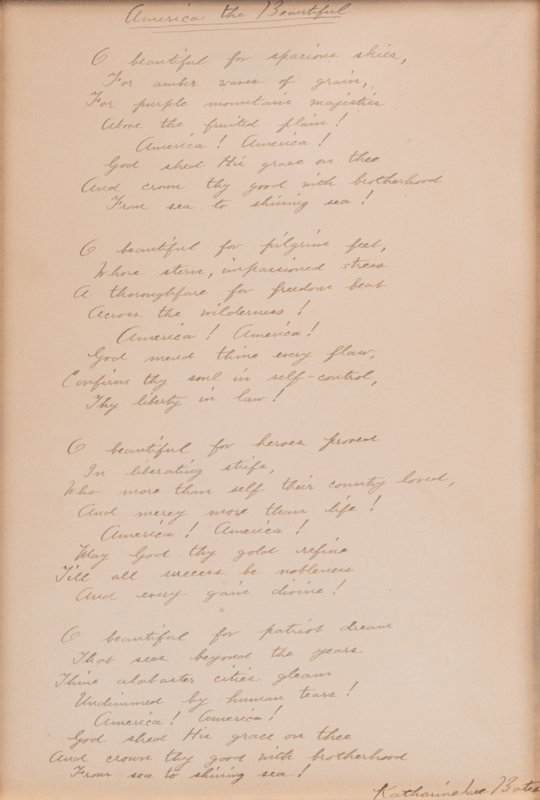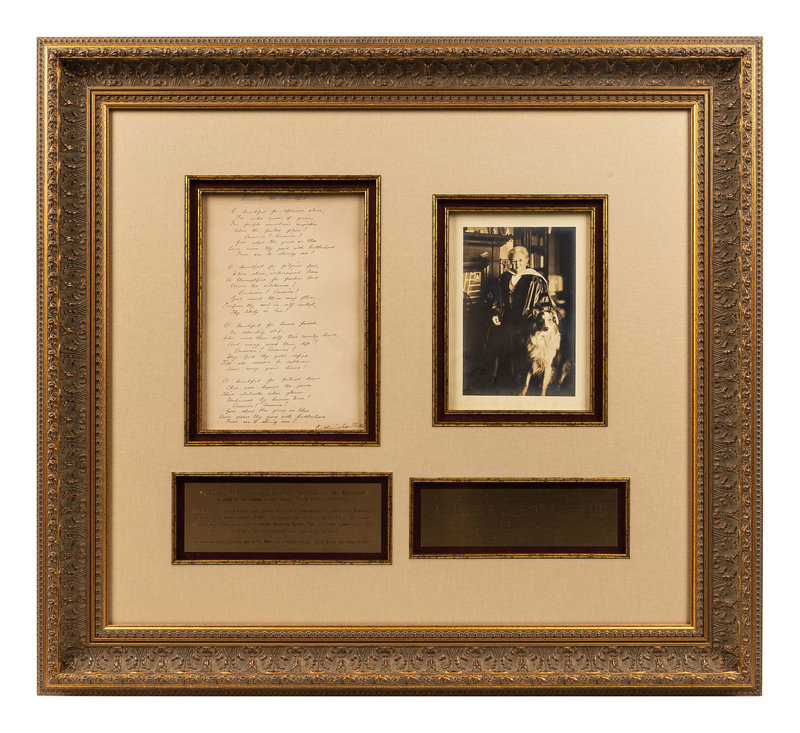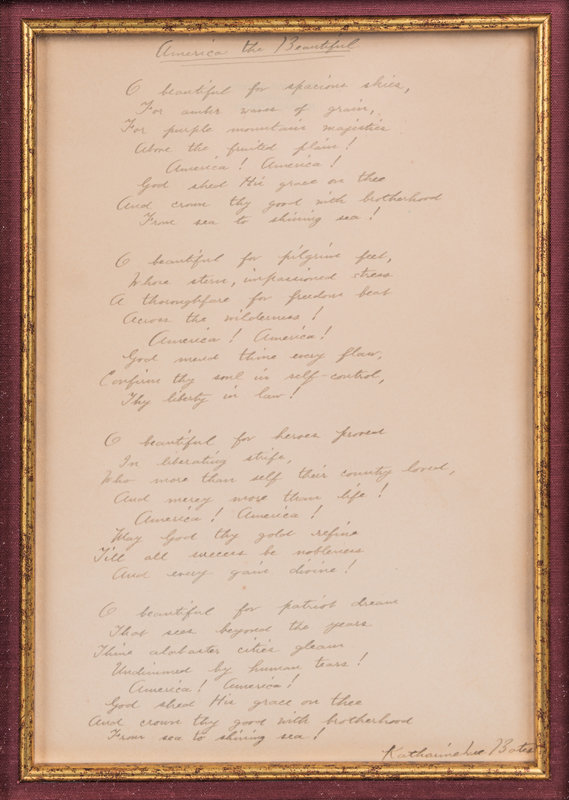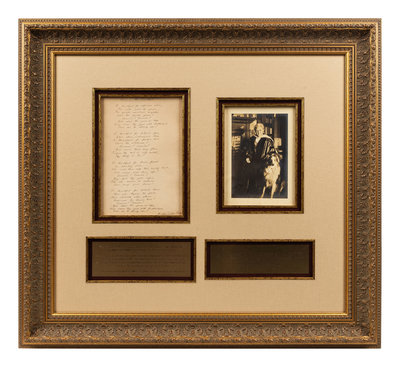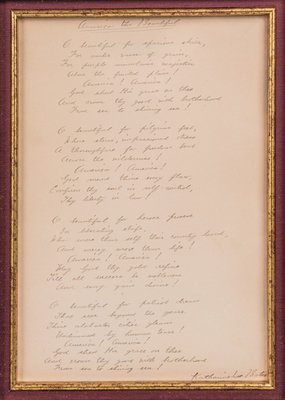Lot 553
BATES, Katharine Lee. Autograph manuscript signed (Katharine Lee Bates"), a fair copy of the full four verses of “America the Beautiful.” N.p., n.d. A fine copy of all four stanzas of the 1911 version of "America the Beautiful."
Sale 1097 - Fine Printed Books & Manuscripts, Including Americana
Lots 1-410
Nov 8, 2022
9:00AM CT
Lots 411-717
Nov 9, 2022
9:00AM CT
Live / Chicago
Own a similar item?
Estimate
$10,000 -
15,000
Price Realized
$6,250
Sold prices are inclusive of Buyer’s Premium
Lot Description
BATES, Katharine Lee. Autograph manuscript signed (Katharine Lee Bates"), a fair copy of the full four verses of “America the Beautiful.” N.p., n.d.
1 page, 4to, 32 lines in 4 stanzas, on her personal stationery, matted and framed (unexamined out of frame). Provenance: Corinne Waldo (Bates’s friend, with signed note from Waldo’s granddaughter).
"O BEAUTIFUL FOR SPACIOUS SKIES, FOR AMBER WAVES OF GRAIN"
A fine copy of all four stanzas of the 1911 version of "America the Beautiful." Bates was inspired to pen her patriotic hymn by a visit to Pike's Peak. Bates was living in Colorado where she was teaching English at Colorado College. She would explain, "One day some of the other teachers and I decided to go on a trip to 14,000-foot Pikes Peak. We hired a prairie wagon. Near the top we had to leave the wagon and go the rest of the way on mules. I was very tired. But when I saw the view, I felt great joy. All the wonder of America seemed displayed there, with the sea-like expanse." She returned to her room at the Antlers hotel, and wrote a few stanzas in her notebook.
The poem, which she originally entitled "Pikes Peak," was first published with the title "America" in The Congregationalist to commemorate the fourth of July in 1893, and was amended in 1904 and again in 1911. In addition to her visit to Pike's Peak, Bates was inspired by what she saw when she traveled from Massachusetts to Colorado: the World's Columbian Exposition in Chicago, and the wheat fields of the heartland in Kansas. Her poem was set to at least 75 different melodies, but it was Samuel A. Ward's hymn tune which was generally considered the best setting as early as 1910. The song, often considered to be America's "second national anthem," is as easily recognizable as "the Star-Spangled Banner," and several unsuccessful attempts have been made to give "America the Beautiful" legal status as a national hymn or anthem. The original manuscript is held by the Falmouth Historical Society.
Property from the Patrick Atkinson Collection, Minneapolis, Minnesota
Condition Report
Contact Information
Auction Specialist
